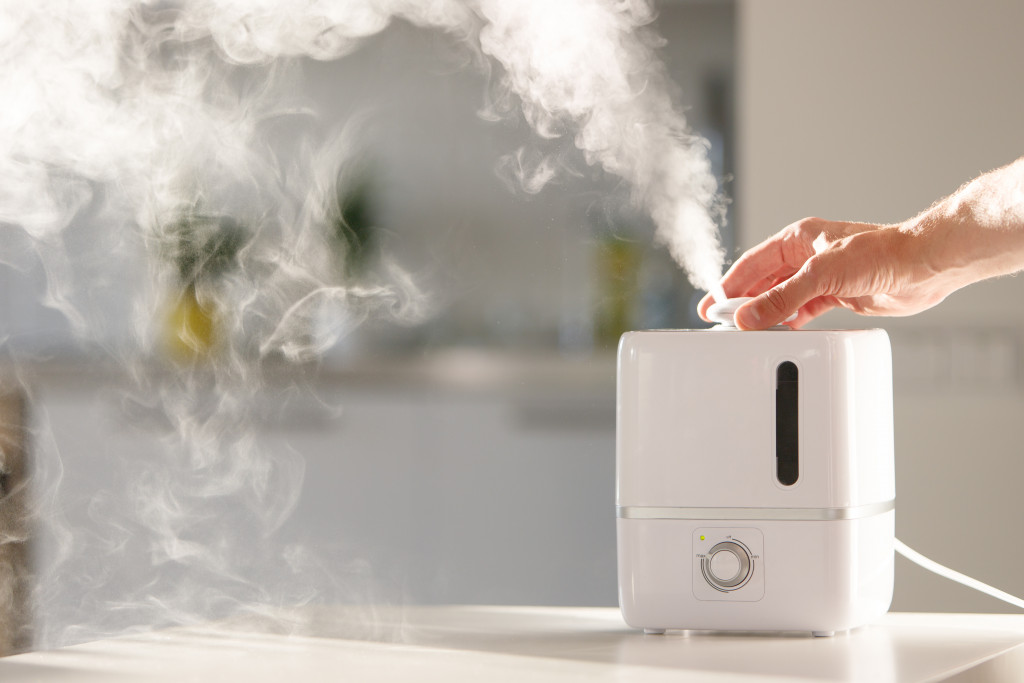At home, we all want to feel safe. We want to know that our families are protected from the dangers of the outside world. While there are many things we can do to make our homes safe—like installing a security system—sometimes it’s not enough.
Even with a security system, your home could be at risk from something as simple as airborne toxins. That’s why air purifiers and filters can be such an essential addition to your home safety arsenal and can be a good complement to your existing HVAC system.
By removing harmful toxins from the air, they help keep you and your family safe from potential harm. Therefore, if you’re an HVAC business owner looking for ways to make homes safer, don’t forget about the importance of air purification when you draft your next HVAC marketing and advertising campaign. Looking at how you can improve air quality while keeping homes at their ideal temperature is a good campaign strategy that will bring in more leads and keep existing clients loyal.

What Exactly Is an Air Purifier?
Air purifiers are machines that can remove harmful toxins from the air. Because they work continuously, removing pollutants at a high rate of speed, there’s little chance for them to settle on surfaces or cause any damage to your home. They’re also much more efficient than other indoor air quality improvement methods like ventilation or open windows.
This means that there’s less chance you and your family will be exposed to the pollutants they remove.
Air Purifier Types: How Do They Work?
There are many types of air purifiers on the market today. While each purifies in its unique way, most rely on one or more of these methods of filtration:
1) Germicidal Filtration
Using ultraviolet light, germicidal filtration kills bacteria and viruses. While this is a powerful form of purification, it can be costly to run and may not affect all pollutants. In addition, some contaminants are attracted to the UV radiation used in this process. So they’re not removed as efficiently as they could be.
2) HEPA Filtration
Highly effective at removing allergens like dust and pet dander, high-efficiency particulate air (HEPA) filtration also reduces the number of airborne particles in your home. This process is proven to remove up to 99.97% of pollutants from your indoor air.
3) Activated Carbon Filtration
Using activated carbon, filters with this type of filtration may be able to remove pollutants like chemicals, gases, and strong odors from your home. While it’s not the most effective kind of air purification, activated carbon may also provide some relief from allergies and other respiratory problems.
4) Ionizers and Ion Filtration
By charging the air with negative ions, this process is thought to remove some pollutants from your home. While it may not be as effective as HEPA filtration, ionizers and ion filtration can be used to supplement other types of purification methods. They’re also helpful for preventing the build-up of static electricity, which can attract pollutants to your home.
Other Types of Air Purification Tools
While air purifiers are the most common type of air purification device, there are other tools available to help improve indoor air quality. These include:
1) Negative Ion Generators
These devices release negative ions into the air, which attach to charged particles and help remove them from your home. While they’re not as effective as air purifiers, negative ion generators may be able to reduce the number of airborne bacteria or allergens in your home by attracting them to the electrodes inside the generator.
2) Ozone Generators
By using ultraviolet light, ozone generators can kill germs and other bacteria in your home. However, they can also create oxidation byproducts that cause health problems. So the EPA only recommends using them when all other options have failed to improve indoor air quality. And, even then, you should use them in a well-ventilated room for short periods.
3) Heat Lamps
These are sometimes used to treat respiratory disorders like asthma by increasing the concentration of particulate matter in the air. However, there’s some risk that heat lamps create harmful ozone levels. So it’s essential to closely monitor their use and ensure your home has proper ventilation while they’re turned on.
Are They Effective?
While air purifiers and filtration tools can effectively reduce the number of pollutants in your home, there’s no way they can remove all contaminants. And, with some types of purification, you may not even realize how much pollution is building up inside your living space.
This means that it’s essential to pay attention to indoor air quality throughout the year, not just during the winter when the heating is turned on. Keep windows closed when it’s dry outside and open them when there’s moisture in the air if you have a problem with allergies or asthma. And keep in mind that air purifiers shouldn’t be your only source of filtration.
Whether you’re looking for HEPA filtration or carbon filtration, make sure the air purifier has the best kind of filter to ensure you’re breathing clean air when you turn it on.
